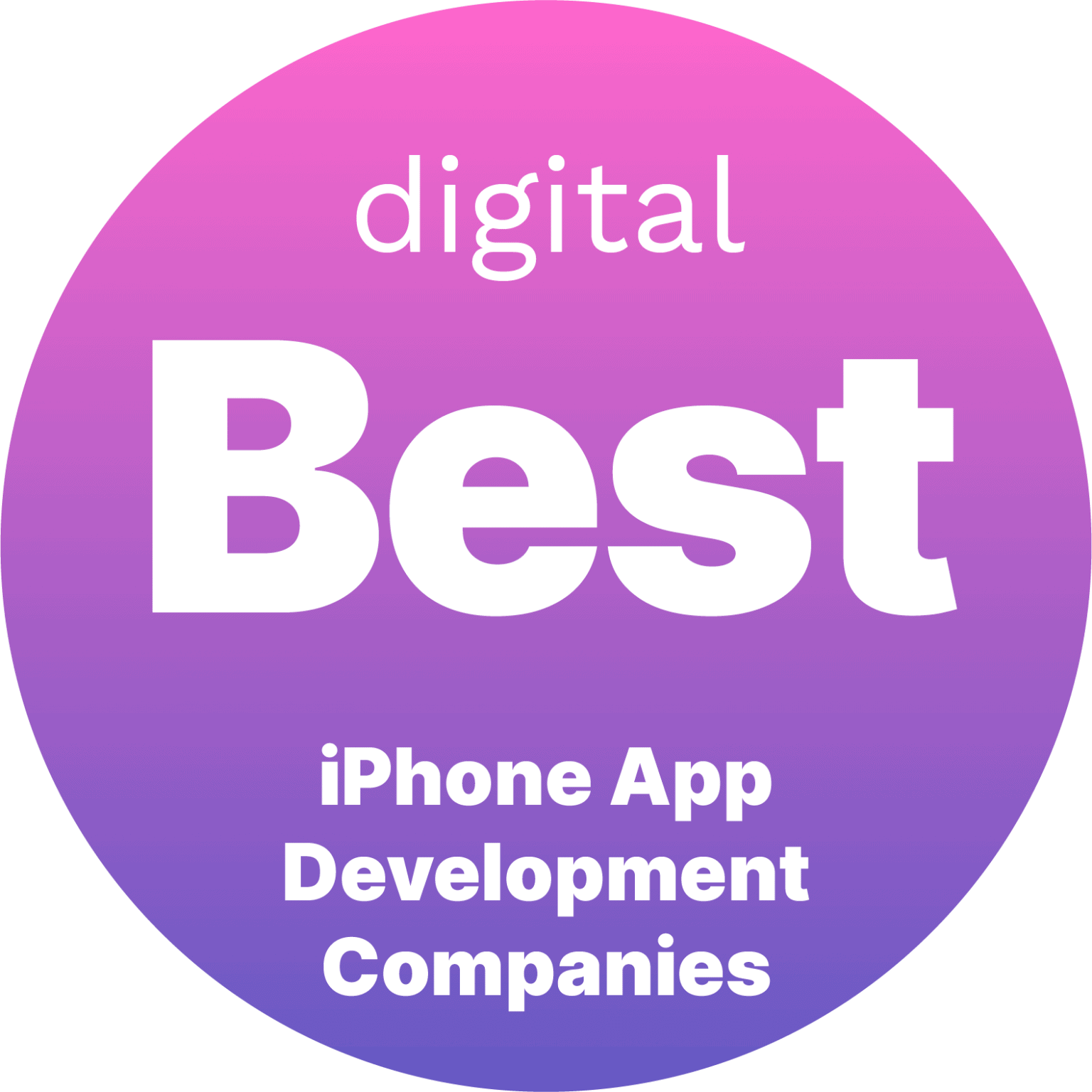Key Takeaways:
- Accelerated Time-to-Market: Cross-platform frameworks like Flutter and React Native enable faster development and simultaneous iOS/Android launches, helping businesses reduce time-to-market by reusing a single codebase. Features such as “hot reload” allow rapid iteration, letting teams build, test, and deploy apps more quickly than traditional native approaches.
- Cost Savings & ROI: Developing one cross-platform app instead of separate native apps can cut development costs by roughly 30–40%. Businesses save on engineering hours and maintenance, all while reaching both major mobile platforms – a key reason many startups and enterprises have embraced Flutter and React Native for cost-effective mobile app development.
- Mature Performance & UX: In 2026, Flutter and React Native apps deliver near-native performance and polished user experiences. Powerful engines like Flutter’s Impeller and React Native’s new Fabric architecture enable smooth 60–120Hz animations and responsive interfaces on modern devices. Both frameworks have evolved to support high-performance, visually rich applications that satisfy today’s mobile users.

Choosing the right mobile app framework has become a strategic business decision. By 2026, cross-platform development is no longer a compromise – it’s often the go-to approach for mobile app projects, from nimble startups to large enterprises. The promise is compelling: build your app once and deploy it to both iOS and Android, saving time and money while reaching a broader audience. Flutter and React Native have emerged as the two leading cross-platform frameworks, each backed by tech giants (Google and Meta, respectively) and each with its own strengths.
For business owners, the Flutter vs. React Native question impacts everything from development cost and speed to app performance and long-term maintainability. Both frameworks offer the allure of faster development and a single codebase, but they take very different technical approaches. In this guide, we’ll demystify those differences and provide a 360° comparison from a business perspective. Whether you’re looking to build an MVP on a tight budget or planning a scalable product for millions of users, understanding Flutter and React Native will help you make an informed decision that aligns with your goals.
Cross-Platform Development in 2026: Why It Matters for Business
Cross-platform app development has matured significantly, bringing substantial business benefits. Here’s why so many companies are opting for frameworks like Flutter and React Native:
Faster Time-to-Market: With a single codebase for both iOS and Android, development teams can work in parallel for two platforms at once. This unified approach, combined with features like hot-reload (instant code changes applied in the running app), accelerates the development cycle. Companies can launch new apps and features quicker than if they were managing separate native projects. In a competitive market, this speed can be a decisive advantage.
Lower Development Costs: Building one app for both platforms is simply more efficient. By avoiding duplicate native codebases, businesses save significantly on development costs – on the order of 30–40% savings compared to two separate native apps. Fewer developers are required to cover both platforms, and project management is streamlined. This makes cross-platform ideal for startups watching their burn rate, as well as established firms seeking better ROI on IT spending.
Unified Maintenance: Post-launch, having one codebase means updates, bug fixes, and new features can be rolled out to all platforms simultaneously. This reduces ongoing maintenance effort and costs. Instead of coordinating two engineering teams (iOS and Android) for each change, a single team can handle updates, ensuring feature parity and consistency across platforms. It also simplifies quality assurance testing and can lead to fewer platform-specific bugs in the long run.
Near-Native Performance: In the past, cross-platform tools had a reputation for lagging behind pure native apps in performance or UI polish. That gap has largely closed by 2026. Modern cross-platform frameworks leverage hardware acceleration and optimized engines so that, for most apps, users won’t notice a difference. Both Flutter and React Native can deliver smooth scrolling, fast load times, and slick animations – even 120fps interfaces for high-end devices. This means businesses can get the broad reach of cross-platform without sacrificing the quality of user experience.
Consistent User Experience: Cross-platform frameworks make it easier to ensure a consistent UI/UX design across different devices and operating systems. This is especially true for Flutter, which offers a single unified widget toolkit for both platforms. Users get the same features and interface whether they’re on an iPhone or an Android device, reinforcing brand identity. (We’ll discuss later how this consistency can be a double-edged sword – great for branding, though it means less “native” look on each OS.) Overall, a unified design can simplify the design process and help deliver a cohesive experience to all users.
Of course, cross-platform isn’t a silver bullet – extremely complex apps or those needing very platform-specific functions might still require native code in some parts. But for a huge range of business applications, Flutter and React Native now offer a sweet spot of speed, cost efficiency, and sufficient performance. No wonder surveys show that by mid-decade, a majority of new mobile projects are using cross-platform frameworks.
Flutter vs. React Native: An Overview of the Frontrunners
Both Flutter and React Native enable cross-platform mobile app development, but they come from different philosophies and ecosystems. Here’s a quick overview of each framework and their popularity as of 2026:
Flutter – Created by Google and first released in 2018, Flutter is a UI toolkit and framework that uses the Dart programming language. Flutter takes a “complete package” approach, providing its own rendering engine (built on Skia, now evolved with the Impeller engine) and a rich set of pre-designed widgets for iOS and Android that Flutter renders itself. Essentially, Flutter draws the UI from scratch on a canvas, rather than using the native UI components of the platform. This gives developers pixel-perfect control over how the app looks on every device. Flutter apps compile to native machine code, and there’s no JavaScript bridge at runtime – which can yield excellent performance. Google has heavily invested in Flutter not just for mobile, but also for web and desktop support, positioning it as a truly multi-platform solution.
React Native – Developed by Facebook (now Meta) and open-sourced in 2015, React Native is based on the popular React JavaScript library. It allows developers to write mobile apps in JavaScript or TypeScript and uses a bridge to render native UI components on iOS and Android. In other words, a React Native app’s interface is made up of actual native buttons, text fields, lists, etc., but driven by JavaScript logic. For years, React Native relied on a JavaScript-to-native bridge architecture, which could introduce some performance overhead. However, in recent versions, React Native has rolled out a new architecture (Fabric and TurboModules) that eliminates the old bridging bottleneck, making interactions between the JavaScript layer and native platform faster. React Native leverages the huge NPM ecosystem of JavaScript, allowing developers to use countless libraries. It’s also the core of cross-platform development at companies like Meta and many others, proving its ability to handle large-scale apps.
 Popularity and Community: Both frameworks are widely used, but Flutter’s popularity has surged in recent years. By late 2023, 46% of developers worldwide had used Flutter, versus 35% for React Native. In Stack Overflow’s 2024 developer survey, Flutter and React Native were essentially tied in popularity among professional developers (each around 9% usage) – a testament that both have earned broad acceptance in the dev community. However, the trend shows Flutter overtaking React Native: Google Trends data since 2020 indicates more global interest in Flutter, and Flutter’s GitHub repository has accumulated more stars and contributors, signaling enthusiastic momentum. In fact, industry observers predicted Flutter would become the #1 cross-platform framework by 2025, and that prediction has largely come true.
Popularity and Community: Both frameworks are widely used, but Flutter’s popularity has surged in recent years. By late 2023, 46% of developers worldwide had used Flutter, versus 35% for React Native. In Stack Overflow’s 2024 developer survey, Flutter and React Native were essentially tied in popularity among professional developers (each around 9% usage) – a testament that both have earned broad acceptance in the dev community. However, the trend shows Flutter overtaking React Native: Google Trends data since 2020 indicates more global interest in Flutter, and Flutter’s GitHub repository has accumulated more stars and contributors, signaling enthusiastic momentum. In fact, industry observers predicted Flutter would become the #1 cross-platform framework by 2025, and that prediction has largely come true.
That said, React Native remains a powerhouse with a massive community and lots of mature libraries. Its longevity (an extra three years in the market) means many developers and companies already have React Native expertise. The JavaScript underpinning also means web developers can jump into mobile via React Native quite easily – a huge plus for organizations with large web development teams. React Native boasts a vast ecosystem of plugins; there are over 1.8 million packages on NPM (not all specific to mobile, but readily usable in React Native projects). Flutter’s own package repository, pub.dev, lists over 33,000 packages – smaller in raw number, but often high-quality and purpose-built for Flutter’s architecture.
From a business perspective, both frameworks are proven in production by companies big and small. Flutter is used by companies like Alibaba, BMW, Toyota, and Google itself (e.g. Google Pay app). React Native powers parts of apps for Meta (Facebook), Instagram, Walmart, Discord, and many others. This real-world adoption provides confidence that each framework can handle serious, scalable applications. Next, we’ll dive deeper into how they compare on critical factors like performance, user experience, development effort, and long-term considerations.
Performance and User Experience
Performance and user experience are paramount – you want your app to feel smooth and native to delight users. Initially, some business leaders worry that a cross-platform app might feel “watered down” compared to a true native app. The good news: both Flutter and React Native have evolved to deliver excellent performance for the vast majority of use cases, but they achieve this in different ways.
Flutter Performance: Flutter has a reputation for high performance and fluid UI. Because Flutter compiles down to fast native code (using Ahead-of-Time compilation for release builds) and controls every pixel on the screen via its rendering engine, it avoids many performance pitfalls. Flutter apps don’t use a JavaScript bridge; instead, Dart code directly executes native machine code and draws the interface using GPU-accelerated graphics. This means there’s less overhead and fewer middle layers. In practice, Flutter can guarantee smooth 60 fps animations on most devices, and even up to 120 fps on capable hardware (which is great for the latest iPhones and Android phones with high refresh rate screens). Independent benchmarks often show that Flutter apps have smaller APK sizes, lower CPU usage, and lower memory consumption compared to equivalent React Native apps. The difference may not be noticeable in a simple app, but in graphics-intensive or animation-heavy applications, Flutter’s direct rendering approach shines.
Another performance aspect is consistency. Because Flutter renders everything itself, your app’s UI will behave uniformly across different OS versions and device models. You’re not relying on OEM-provided UI components (which can vary); a Flutter button renders the same on Android 13 as it does on Android 11, unless you change it. This can reduce unexpected quirks and ensure all users get a smooth experience. The trade-off is that Flutter apps might not automatically adopt new native UI styles or components until Flutter updates its widgets – but more on that later.
React Native Performance: React Native historically had a bit more overhead due to its architecture. In classic React Native, your app’s interface is made of real native components, but the logic is running in a JavaScript thread that communicates with those components via a bridge. This could sometimes introduce a slight lag, especially if a lot of messages were going back and forth (e.g., in an animation or during heavy computations). However, React Native’s performance has improved markedly thanks to the introduction of the Hermes JavaScript engine and the new bridgeless architecture. In recent versions (RN 0.70+), React Native uses a system called JSI (JavaScript Interface) which, along with TurboModules and Fabric UI Manager, cuts out the old bridge and allows direct, faster calls between JavaScript and native code. The result is smoother animations and faster startup times than older React Native apps had. Many of the notorious performance issues (like the infamous occasional lag in very complex scroll lists) have been mitigated.
For standard business apps (think social feeds, e-commerce apps, data dashboards, etc.), React Native can feel as fast and responsive as a native app to users. The “native components” approach also means that a React Native app inherently uses the platform’s UI elements which are usually highly optimized (for example, an iOS UITableView for a list, or Android’s RecyclerView). So if your app sticks to mostly standard UI patterns, React Native performs very well. The framework’s weakness might show up with extremely heavy custom UI transitions or graphics (where Flutter might have an edge), or in applications that demand absolutely real-time processing (like a high-end 3D game or AR – which few businesses attempt in RN or Flutter anyway).
User Experience & UI Differences: Beyond raw speed, consider the qualitative aspects of UI and UX:
Flutter’s Consistent UI: Flutter provides its own widgets for everything – from buttons and menus to more complex components. Out of the box, Flutter offers widgets styled as Material Design (Google’s design system, common on Android) and Cupertino (Apple’s iOS design language). Developers can choose either style or create a custom look. Importantly, Flutter apps by default will look and behave the same on iOS and Android (aside from minor platform adaptations like scroll physics). For brands that want a uniform look across platforms or highly custom designs, this is a huge plus. You can achieve “pixel-perfect” designs that match your brand identity since you’re not constrained by native UI controls. Many designers love that a Flutter app can be made to look identical to a design mockup, regardless of device.
However, the flip side is that a Flutter app can sometimes feel less like a native iOS or Android app in terms of the default style. For example, on iOS, Flutter’s Material-style widgets won’t automatically use the latest iOS visual styles unless you specifically use Cupertino widgets or adjust them. This means Flutter gives you control and consistency at the expense of automatic nativeness. It’s a conscious choice: if you want an app that looks exactly the same on every platform (or you want to heavily customize the UI anyway), Flutter is fantastic. If you prefer to blend in with each platform’s look and feel, you have to put in a bit of extra effort with Flutter (or consider React Native’s approach).
React Native’s Native Look & Feel: React Native, in contrast, leverages the native UI components of each platform by default. A React Native button on iOS is actually using UIKit’s UIButton; on Android, a Material Button view. This means a basic React Native app will tend to look like a native app on each platform without much extra work. Your iOS users and Android users might get slightly different styling aligned with their OS conventions (for instance, form inputs, switches, navigation animations will follow platform norms). This can translate to a more familiar feel for users – an iPhone user sees the typical iOS toggles and pickers, an Android user sees Android-style buttons and menus.
The downside is potential inconsistency: because you’re using two sets of components under the hood, you might encounter small differences you need to smooth out. For example, the way a default dropdown menu behaves on Android vs iOS could differ, and you might need to adjust styling to ensure your branding is consistent. There’s also the situation where a new OS version comes out with updated UI components; a React Native app might automatically pick up some of those changes on one platform but not the other. This can be a pro or con: it’s nice that your app can feel updated on the platform that changed (without you doing anything), but it could also mean your iOS and Android apps drift apart stylistically over time if you’re not careful. In practice, good React Native development involves testing on both platforms and making conditional tweaks as needed to maintain a uniform experience where desired.
Bottom Line – Performance & UX: For most typical mobile apps, both Flutter and React Native can deliver a smooth, high-quality user experience that will satisfy customers. Flutter might have a performance edge in extremely graphics-heavy scenarios and offers total control over the UI (great for custom branded experiences). React Native yields a more native look and can integrate new OS features/UI components more organically, which can be advantageous for certain use cases. From a business viewpoint, neither framework should pose a performance roadblock in 2026 – they’re battle-tested. The choice comes down to what kind of experience you want to create and, as we’ll explore next, the development process and resources required to get there.
Development Experience and Productivity
The technical capabilities of Flutter and React Native are one thing, but as a business owner you also need to consider the development experience – how easy (or hard) it is for your team to build and maintain the app in each framework. Developer productivity, learning curve, and available talent pool can significantly impact project timelines and success.
Programming Language & Learning Curve: One of the biggest differences is the language and skill set involved:
React Native uses JavaScript/TypeScript and React. This is huge because JavaScript is one of the most widely known programming languages. If your company already has web developers or if you’re partnering with an agency, it’s highly likely you have access to JavaScript/React expertise. The learning curve for a decent web React developer to start building basic React Native features is relatively gentle – the concepts of React (components, state, props) carry over. This familiar terrain means onboarding developers to React Native can be fast. You don’t have to learn a brand new language from scratch. For many businesses, this is a decisive factor: you can repurpose existing web dev resources for mobile. Additionally, the vast ecosystem of JavaScript tools (IDEs, linters, testing frameworks, CI/CD pipelines) can be leveraged, and many developers already know them.
 Flutter uses Dart. Dart is less common; it was created by Google and is used heavily in Flutter, but outside of Flutter it’s not a mainstream language. For most teams, Flutter will require learning Dart. The good news is Dart is designed to be easy to pick up – it’s an object-oriented, strongly-typed language that feels a bit like a mix of Java, JavaScript, and C#. Many developers report that Dart’s syntax and structure are straightforward, and Flutter’s documentation and tutorials are excellent for newcomers. In fact, some find Dart easier to work with than JavaScript, due to features like sound null safety and a lack of the more confusing parts of JS. So while there is an initial learning curve (perhaps a few weeks for a developer to become comfortable), once that hurdle is cleared, productivity can be very high. Google has invested in making Flutter “developer-friendly” – things like the Flutter DevTools, hot reload, and a coherent widget tree architecture can make building UIs quite fast after the initial adoption phase.
Flutter uses Dart. Dart is less common; it was created by Google and is used heavily in Flutter, but outside of Flutter it’s not a mainstream language. For most teams, Flutter will require learning Dart. The good news is Dart is designed to be easy to pick up – it’s an object-oriented, strongly-typed language that feels a bit like a mix of Java, JavaScript, and C#. Many developers report that Dart’s syntax and structure are straightforward, and Flutter’s documentation and tutorials are excellent for newcomers. In fact, some find Dart easier to work with than JavaScript, due to features like sound null safety and a lack of the more confusing parts of JS. So while there is an initial learning curve (perhaps a few weeks for a developer to become comfortable), once that hurdle is cleared, productivity can be very high. Google has invested in making Flutter “developer-friendly” – things like the Flutter DevTools, hot reload, and a coherent widget tree architecture can make building UIs quite fast after the initial adoption phase.
The key consideration is your team’s existing skills. If you have a strong web/JavaScript background in-house, React Native might give you a head start. If you’re starting from scratch or using a new team either way, then Flutter’s learning curve isn’t a deal-breaker – many agencies and dev shops ramped up on Flutter in the last couple of years due to high demand.
Development Speed & Hot Reload: Both Flutter and React Native support “hot reload” (or “fast refresh”), which is a game-changer for developer productivity. This feature allows developers to make a code change and instantly see it reflected in the running app, without a full recompile or restart. It dramatically shortens the feedback loop during development.
Flutter is especially praised for having near-instant and reliable hot reload – you can change UI elements, state, etc., and see the result in under a second in many cases. React Native also has a hot reload feature (often called Fast Refresh), though historically it could be a bit temperamental – sometimes requiring a manual reload if it didn’t pick up certain changes. Recent improvements have made React Native’s fast refresh quite solid, but Flutter’s hot reload is still considered slightly more seamless and robust. In either case, this means both frameworks let developers iterate quickly on the app’s design and functionality, which speeds up development and allows for more experimentation without lengthy rebuilds. For a business, that translates to faster development cycles and potentially lower cost (developers spend more time coding, less time waiting on builds).
Tooling and Documentation: Flutter comes with an integrated toolkit – developers typically use Android Studio, VS Code, or IntelliJ with Flutter plugins. Flutter’s documentation has been lauded as very thorough, and being a single-vendor solution (Google) means the docs cover end-to-end usage. React Native’s documentation is also decent, but because RN relies on a mix of official docs and the wider React/JavaScript ecosystem, developers often reference a variety of sources (npm documentation, third-party library docs, etc.). Neither framework is lacking in learning resources: there are countless tutorials, forums (Stack Overflow, Reddit), and community guides for both. However, Flutter’s community, while slightly smaller, is known for being highly engaged – Flutter enthusiasts often publish detailed how-tos and even Google runs regular Flutter news updates. React Native’s community benefits from the larger React and JS community – answers to common issues are usually a quick search away thanks to the huge user base.
Available Talent and Hiring: This is a critical business concern: will you be able to find (and afford) developers to build and maintain your app? Here, React Native currently has the edge in sheer numbers. There are millions of JavaScript developers out there, and many know React. So finding a React Native developer (or training a JavaScript developer to use RN) is generally easier than finding an experienced Flutter developer. Dart and Flutter specialists are fewer, and with Flutter’s rising popularity, they’re in high demand – which can command higher salaries or contract rates. If you’re hiring a development agency or a team, you’ll find plenty that offer React Native services, and an increasing number that do Flutter as well. But some companies have reported that after choosing Flutter, it was challenging to hire enough Flutter developers or scale their team quickly. The gap is closing year by year as more devs learn Flutter, but it’s something to keep in mind. If you have a strong internal team of JS engineers, going with React Native means you can leverage them. If you’re reliant on hiring new talent, you might have a slightly larger pool to pick from with RN (though truly skilled mobile developers in either framework will be competitive).
Code Maintainability: Both Flutter and React Native encourage good modular development patterns, but there are some differences:
Flutter’s Dart is strongly typed, which can reduce certain types of bugs and makes large codebases somewhat easier to manage (the compiler catches errors). Flutter’s widget tree structure also enforces a clear separation of concerns (UI layout is code, but styled via properties, etc.). Many developers find Flutter code very readable and easy to refactor once they get used to the declarative UI approach.
React Native, using JavaScript, has to manage things like different thread (the JS thread vs UI thread) and relies on a lot of third-party libraries for additional functionality. JavaScript is dynamically typed, which can lead to runtime errors that wouldn’t happen in Dart (though using TypeScript with React Native can mitigate this). One big advantage of RN is the ability to share code with web – you could have a React web app and a React Native mobile app and share some business logic or UI components (using libraries like React Native for Web). This kind of code sharing can further boost productivity if that fits your scenario. Flutter is working on unifying mobile and web as well, but in practice code sharing between Flutter mobile and, say, an Angular/React web app is limited (they’re separate stacks). Flutter can, however, target web and desktop directly with the same code, which is a form of reuse (more on that later).
In summary, React Native might let you hit the ground running faster if your team knows JavaScript, and has a massive ecosystem of libraries and a huge talent pool to draw from. Flutter offers potentially cleaner architecture and equally high development velocity once your team is up to speed, and can result in very reliable cross-platform outcomes (no need to constantly tweak for each OS). The best choice often hinges on your existing resources: if you have to assemble a team from scratch, you could go either way by picking a skilled development partner. If you already have in-house developers leaning one direction (web or not), it could tilt the balance.
Ecosystem and Support
Building an app is not just about writing code – you also rely on frameworks, libraries, and the community for support. Both Flutter and React Native have healthy ecosystems in 2026, but with some notable distinctions that business owners should consider:
Third-Party Libraries & Integrations: Modern apps often need a range of integrations – from analytics and payment processing to camera access and geolocation. React Native, thanks to its longer presence and JS base, has a slight advantage in library availability. Pretty much any feature you can think of has an open-source package or plugin in the React Native world. Need charts? There are multiple RN chart libraries. Need a specific payment SDK? Odds are it’s already been wrapped for RN, or you can use a web SDK easily via the JavaScript layer. And if something isn’t available, React Native allows writing custom native modules in Swift/Objective-C or Java/Kotlin and then bridging them to JS – a path many teams take for very specialized needs. The catch: with so many third-party libraries, quality varies. Some libraries might be abandoned or not well-maintained, so your developers will sometimes spend time evaluating or even fixing a community package. It’s the flip side of having “1.8 million packages on npm” – quantity is not always quality. Still, the breadth is reassuring; you rarely have to reinvent the wheel with React Native.
Flutter’s ecosystem, while newer, has grown rapidly. With 33,000+ packages on pub.dev, most common needs are covered – from Firebase integrations (Google has official Flutter Firebase support) to UI libraries and beyond. Flutter benefits from having many packages maintained or endorsed by Google or the Flutter team, which lends credibility. For example, Google’s Flutter team often works on plugins for device APIs (camera, location, etc.), so you get well-tested packages that are kept up-to-date with platform changes. Moreover, because Flutter doesn’t rely on separate platform UI components, a lot of packages are purely Dart code that works across both iOS and Android without forks. Consistency is a theme in Flutter’s ecosystem – packages are designed for cross-platform from the ground up, leading to fewer “surprises” or conditional code for different OSes. In cases where a needed package doesn’t exist, Flutter also allows platform-specific code: you can write iOS and Android code and call it from Dart (using platform channels or FFI), similar to RN’s bridging, but this is relatively rare for typical app features now.
Community Support: Both frameworks have vibrant communities, which is crucial for getting help and finding developers. React Native’s community is larger in absolute terms – many developers have been using it for years, and big companies contribute to it (for example, Microsoft is actively involved in React Native, using it for some of their apps and even extending RN to support Windows). You’ll find extensive discussions on forums and plenty of Stack Overflow Q&A for React Native issues. On the other hand, Flutter’s community, while a bit smaller, is highly enthusiastic and growing fast. Flutter meetups, conferences, and online groups have blossomed worldwide. Google itself organizes Flutter events (like Flutter Engage) to nurture the community. By mid-2025, Flutter’s GitHub repo had significantly more stars than React Native’s (indicating developer interest) and a very active issue tracker where the Flutter team interacts with the community. This matters because it often translates to faster fixes and more innovation in the open-source project.
From a business owner perspective, community support can also mean ease of finding answers or developers for your project. Both frameworks rank among the top on Stack Overflow and GitHub, so finding solutions to technical issues is usually just a search away. Flutter’s documentation even includes a section “Did you mean to search for React Native vs Flutter comparisons?” reflecting how common that question is – and it provides official guidance to those migrating or comparing.
Maintainer and Corporate Backing: It’s worth noting the backers: Flutter is backed by Google, which uses it in many of its own products (Google Ads app, for instance) and has a dedicated team improving it constantly. React Native is backed by Meta (Facebook) who used it in the Facebook app (for certain features) and still uses it in products like Instagram. Meta is a bit less publicly vocal about React Native these days, but it remains an active contributor. The core difference is Google treats Flutter as a first-class, all-encompassing SDK for the future of app development (even including web and desktop), whereas Meta’s support for React Native is focused on mobile and driven by the needs of its apps and the community. Both frameworks are open-source, so even in the unlikely event that Google or Meta shifted focus, the community (and other companies) would likely continue supporting the projects. In fact, the open-source nature and wide adoption of these frameworks is a safety net – neither is a proprietary tool that might vanish; they are here to stay and evolve.
Cross-Platform beyond Mobile: A point for ecosystem is how far each framework extends. Flutter’s vision is “write once, run anywhere” – not just mobile, but also web and desktop. Today, with Flutter you can use the same codebase to compile a web app or even a desktop app for Windows, Mac, Linux. This multi-platform support is stable for web and desktop as of Flutter 3.0+. For a business, this means potential reuse: you could have a Flutter mobile app and later decide to offer a web version; much of your code (especially logic and UI components) could be repurposed, reducing development effort for the additional platforms. React Native is primarily mobile. There is a project called React Native for Web (developed by one of the core RN contributors) that lets you target web using React Native components, but it’s essentially an adaptation layer on top of React DOM – useful, but it means your web app would still need web-specific tweaking. For desktop, Microsoft has developed React Native Windows and React Native macOS to allow RN apps to run on those platforms, and these are used in some production cases (e.g., the Windows 10 Skype app was RN). However, those efforts are separate and not as universal as Flutter’s approach. So, if your product roadmap envisions one app running on phone, tablet, web, and desktop, Flutter currently offers a more unified solution to achieve that. This broader ecosystem might be a deciding factor for some businesses looking to maximize platform reach.
Longevity and Updates: As of 2026, both frameworks release updates regularly. Flutter has a roughly quarterly release cycle with new features, and a very active beta channel for those who want the cutting edge. React Native also releases often (every few weeks minor releases, plus community-driven updates). One difference: Flutter updates tend to be backward compatible and easy to adopt, whereas React Native updates sometimes require a bit more effort to upgrade (especially historically, upgrading RN could be non-trivial if your project was on an older version due to native dependency changes). The RN team has made strides in smoothing upgrades, though. Why does this matter to a business owner? It affects the maintenance overhead – keeping your app up-to-date with the framework ensures you get performance improvements and security fixes. Flutter’s strong backward compatibility and automation (Flutter has tools to help migrate code when breaking changes do occur) can mean less time fighting with upgrades. React Native, with its many moving parts (native modules, etc.), might occasionally need more developer hours to stay on the latest version. But either way, both frameworks have large support networks to help with this.
In summary, the ecosystems of Flutter and React Native are rich and active. React Native offers breadth and familiarity, tapping into the vast sea of JS libraries and developers. Flutter offers a focused, tightly-integrated ecosystem with robust out-of-the-box support and a fast-growing collection of packages. Neither will leave you stranded when it comes to finding solutions or adding features. The decision often comes down to whether you value the sheer abundance and native alignment of React Native’s world, or the coherence and expanding multi-platform ambition of Flutter’s world.
Choosing the Right Framework for Your Business
With both Flutter and React Native proven in the field, the question isn’t “which is objectively better?” but rather “which is better for our app and business needs?” The right choice depends on your project’s priorities, your team’s capabilities, and long-term considerations. Here are some key factors and scenarios to guide your decision:
Consider Flutter if:
Pixel-Perfect Custom UI is Critical: If your app’s design is a key differentiator – for example, you need highly custom graphics, branded animations, or an identical look across platforms – Flutter gives you unparalleled control. You can implement complex, on-brand UIs that render consistently on every device. Flutter is often praised for achieving designs that would be hard to pull off in React Native without a lot of tweaking. If a gorgeous, uniform UI is at the top of your list, Flutter is a strong choice.
Multi-Platform Ambitions: Flutter’s ability to target mobile, web, and desktop from one codebase is unique. For instance, a SaaS business might want an app on the App Store, Google Play, and also a web portal for desktop users – Flutter can potentially cover all those with shared code. Even emerging platforms (like embedded devices, IoT screens, etc.) are on Flutter’s roadmap. If you want to maximize reuse and have a presence beyond just mobile, Flutter’s “write once, run anywhere” philosophy aligns well.
Fast Prototyping and Iteration: Need to build an MVP quickly to test an idea? Flutter’s development cycle is extremely fast, thanks to hot reload and a rich set of default widgets. Teams often find they can go from concept to a polished prototype in less time. This speed continues into development – if you anticipate many UI changes or iterations, Flutter can accommodate those gracefully.
Budget Constraints for Dual Platforms: If you’re a startup or small business that might have otherwise only built for one platform due to budget, Flutter can let you target both iOS and Android without requiring two separate teams. You don’t have to worry about discrepancies between two codebases, which can reduce project management overhead too. (This applies to React Native as well, but Flutter’s high productivity and unified approach make it especially attractive for small, budget-conscious teams.)
Existing Android Dev Team (or No Team Yet): Interestingly, we often see traditional native Android developers enjoy switching to Flutter (since it’s backed by Google, uses similar IDEs, and Dart might feel familiar if they know Java/Kotlin). If your organization has Android expertise but not iOS, Flutter can leverage that – they can learn Dart and start producing iOS apps via Flutter without having to learn Swift/Obj-C deeply. Also, if you’re building a team from scratch, finding developers excited about Flutter is increasingly easy, as many see it as the “next big thing.”
Consider React Native if:
Existing JavaScript/React Talent: If your engineering team (or chosen development partner) already has strong web development experience, React Native allows you to capitalize on that. Your developers won’t need to learn a new language paradigm; they can transfer their skills and even share some code between your web app and mobile app. This can drastically cut the ramp-up time and risk. Companies with large React codebases often favor RN to extend their products to mobile with minimal friction.
“Native” Look & Platform Fidelity: If you want your app to automatically adopt the look-and-feel of each platform – e.g., using the newest iOS widgets the day they’re available, or following Material Design guidelines on Android – React Native is inherently good at that by virtue of using native components. Apps that need to blend in with the OS UI (like utility apps or those where being consistent with other native apps is important) can lean RN. For example, if you’re building a productivity app and you want it to feel at home on an iPhone with iOS’s native swipe gestures and translucency effects, RN can leverage those UI components readily.
Large Ecosystem Needs: Perhaps your app relies on very specific or cutting-edge libraries – say, a specialized video processing library, or advanced AR, etc. React Native’s vast ecosystem or the ability to easily integrate existing native code might serve you better. Also, if you anticipate needing lots of third-party modules (Facebook login, Stripe payments, ad networks, etc.), RN’s been around longer so more of those SDKs have RN support either officially or via the community.
Incremental Adoption: Some businesses start with one platform and expand later. With React Native, you have the flexibility to, for instance, add a React Native module to an existing native app or vice versa. Facebook originally integrated RN gradually into their native app. If you have a pre-existing native app and want to start moving cross-platform, RN can be integrated screen by screen (Flutter typically is an all-or-nothing rewrite, though it does have add-to-app capabilities, RN’s is more battle-tested). So RN can be a good choice for gradual transitions or hybrid approaches.
Availability of Developers: If speed in staffing up a team is crucial, the larger pool of JavaScript/React developers might tilt towards RN. You might find it easier to hire multiple React Native devs quickly, whereas hiring experienced Flutter devs could take a bit longer due to demand. Additionally, there’s a wealth of outsourcing firms and consultants who specialize in React Native thanks to its longer tenure. If you’re pressed for time to find a team, RN is unlikely to leave you short-handed.
In many cases, either framework would do the job well, and practical considerations (like who you find as a development partner or lead engineer) can drive the decision. Some companies even adopt a polyglot strategy – using Flutter for one project and React Native for another – based on the strengths of the team or the specifics of the app. For example, an app that’s very UI-heavy and isolated might use Flutter, whereas a companion web+mobile service might use React Native to maximize web code sharing.
One more consideration: if your app needs absolute top-tier performance or native-only features, you might question cross-platform altogether. Both Google and Meta acknowledge that truly performance-intensive apps (like 3D games or apps needing deep integration with native APIs, background services, etc.) might still be better off written natively. For instance, the popular vacation rental company Airbnb famously tried React Native but eventually reverted to native in 2019, citing issues like the overhead of maintaining bridge code and difficulties with some platform-specific bugs. That said, Flutter wasn’t as mature back then; today plenty of complex apps run fine on both frameworks. But if your app is doing something extremely niche (say, a VR app or heavy real-time video processing), it’s worth evaluating native development – or at least be prepared to write some native modules in Flutter/RN to handle those parts.
For the vast majority of business applications (social, finance, e-commerce, productivity, health, etc.), cross-platform development with Flutter or React Native will provide huge efficiency gains without a noticeable trade-off in quality. The key is aligning the choice with your project needs and your team. If you’re ever unsure, consult with a development partner who has experience in both; they can assess your specific requirements. The good news is that in 2026, you really can’t go wrong with either Flutter or React Native for most use cases – it’s about finding the best fit, not a “right vs wrong” scenario.
Flutter vs. React Native
In the Flutter vs. React Native debate, the ultimate winner is often your business. Both frameworks have proven that cross-platform development can deliver high-quality mobile apps faster and more cost-efficiently than maintaining separate native codebases. By 2026, they’ve matured to a point where performance is near-native, developer tools are excellent, and a wealth of community knowledge is at your fingertips.
Flutter offers a path to craft beautiful, custom experiences with consistent behavior across all devices – it’s a powerhouse for design-centric apps and rapid multi-platform expansion. React Native leverages the ubiquity of JavaScript to streamline development when you have web-informed teams or want your app to naturally adopt platform-specific nuances. There is no one-size-fits-all answer; the choice should align with your business goals, timeline, and resources.
As a business owner, focus on the factors that matter most for your project: time-to-market, budget, required performance, and the strategic importance of design or platform reach. Often, practical considerations like developer availability or existing code infrastructure will tip the scales. The great news is that either Flutter or React Native can set you up for success if chosen to match your context. Many companies have already delivered successful products with both – and yours can too.
Remember, the framework is a means to an end. What matters is delivering an app that delights your users and drives value for your business. Flutter and React Native are simply two different roads to that destination. Evaluate them in light of the discussion above, and choose the one that best empowers your team. And if you need expert guidance to navigate this choice or execute your vision, don’t hesitate to reach out to a seasoned mobile app development partner who understands both worlds. With the right approach, you’ll leverage cross-platform development to create a winning mobile experience in 2026 and beyond.
FAQs
Which is better for my business app, Flutter or React Native?
There is no universal “best” – it depends on your business needs. Flutter is often better if you need a highly polished, consistent UI across platforms or plan to target web/desktop in addition to mobile. React Native is a great choice if you have an existing team of JavaScript/React developers or you want your app to closely follow native iOS and Android UI conventions. Both frameworks can handle most standard business app requirements in 2026. The decision should consider factors like your timeline, budget, desired features, and the skill sets available to you. Many development agencies are proficient in both and can help assess which fits your specific project. In the end, both Flutter and React Native can deliver a successful app, so it’s about aligning the technology with your project’s priorities rather than one simply outranking the other.
Do Flutter and React Native apps perform as well as fully native apps?
For the vast majority of applications, yes, performance is comparable to native. Both frameworks have made tremendous strides in ensuring smooth performance. Flutter apps compile to native code and use an optimized rendering engine, which gives them impressive speed – often indistinguishable from a native app in terms of UI fluidity and load times. React Native apps use native components and, with the latest architecture (Hermes engine and Fabric), have closed much of the performance gap that existed in earlier versions. In practice, users of popular Flutter or React Native apps generally can’t tell they’re built with a cross-platform tool. Extremely demanding use cases (like graphics-intensive 3D games or ultra-low-latency financial trading apps) might still see native code have an edge. But for typical business apps – social feeds, e-commerce, banking, productivity tools, etc. – both Flutter and RN deliver snappy, responsive experiences. It’s always important to optimize your code and use best practices (just as you would in native development), but the frameworks themselves are not a bottleneck for performance in 2026.
Is it cheaper to build an app with Flutter or React Native?
Building with either Flutter or React Native will be more cost-effective than building two separate native apps. In both cases, you’re largely sharing one codebase across iOS and Android, which can save around 30-40% of development cost and time. When comparing Flutter vs React Native specifically, the development cost is roughly similar – both enable rapid development. Any cost difference will likely come from secondary factors: for example, React Native developers might be more readily available (potentially affecting hourly rates or hiring time), whereas Flutter’s high productivity might mean a slightly smaller team can do the same job. If you already have React expertise, React Native could leverage that and save you ramp-up costs. If you need very custom design work, Flutter’s capabilities might save development hours on polishing the UI. Maintenance costs for both are lower than dual-native, since you fix bugs in one codebase. In summary, choosing cross-platform (Flutter or RN) yields significant cost savings vs native, and between the two, cost isn’t a deciding factor for most projects – it’s more about which fits your situation better. Both are open-source and free to use, so there are no licensing fees involved.
What popular apps are built with Flutter or React Native?
Both frameworks are battle-tested by big players:
Flutter: Globally, Flutter has been used in apps like Alibaba (e-commerce app with millions of users), Google Pay (Google’s payment app in some regions), BMW’s MyBMW app (premium carmaker app), Nubank (the largest digital bank in Latin America), and many others. These highlight Flutter’s capability to handle large-scale, high-performance apps. Even some popular game-like apps (e.g. certain parts of Tencent’s portfolio) and tech-focused apps (like Google Ads and Stadia companion) have used Flutter.
React Native: Coming from Facebook’s labs, React Native was famously used in Facebook’s own app (for certain features) and the Instagram app. It’s also behind Walmart’s shopping app, Airbnb (in the past), Discord (the chat app), Skype (Microsoft adopted RN for the Skype mobile app), and Bloomberg’s consumer app, to name a few. Microsoft’s Office apps have used RN for some cross-platform code as well. Many startups also built their initial products with React Native to speed up development.
These examples should give confidence that both Flutter and RN can handle real-world demands. It’s worth noting that some companies that tried cross-platform early (like early Airbnb with RN) hit snags, but the frameworks have evolved immensely since then. Today’s success stories – from finance to retail to social media – show that you can achieve native-like quality and reliability with either Flutter or React Native. The key is having a good development team that understands the framework’s best practices.
Can I use Flutter or React Native for web or desktop apps as well as mobile?
Flutter can. Flutter was designed as a portable UI framework, and it has the capability to compile your app to Web, Windows, macOS, Linux, and even embedded devices in addition to iOS and Android. If you build your app with responsive design in mind, you could use much of the same code for a web application or a desktop application. This is a big plus for Flutter – for example, you might share your business logic and UI components across mobile and a web admin portal. Businesses have started taking advantage of this to reduce the number of separate codebases. Keep in mind, the web output of Flutter is essentially a WebAssembly/HTML canvas approach, which might not be SEO-friendly for public websites, but it works great for app-like web experiences (think management dashboards, internal tools, etc.). Desktop support is still improving, but it’s already used in production by some (e.g., Flutter is used in the Linux UI for Google’s Stadia controller management).
React Native is focused on mobile, but there are options for web/desktop:
For web, there’s React Native Web, a library that translates React Native components to web DOM elements. It allows a high degree of code sharing between a React Native mobile app and a web app. Companies like Twitter Lite have used an approach like this. However, if you don’t already have a React web app, you’d essentially be developing a web frontend separately (even if in a similar style). In contrast to Flutter, React Native doesn’t compile to web directly; you’d typically maintain a web app (perhaps written in standard React) that shares some logic or UI definitions with the mobile app via React Native Web. It’s feasible and works well for many, but it’s not “write once run anywhere” magically – it requires web development effort.
For desktop, the community (with help from Microsoft for Windows) has extended React Native to support Windows and Mac. If you want a Windows desktop app and have a lot of shared code from your RN mobile app, you can leverage React Native Windows. Similarly, React Native macOS can target Mac desktop. These projects lag slightly behind the mobile versions in features and community support, but they are actively maintained. For example, Microsoft uses React Native for parts of the Windows 10 UX and some of their apps.
In summary, Flutter currently offers a more unified multi-platform solution out-of-the-box. React Native can be part of a multi-platform strategy but often involves combining it with traditional web or using additional libraries for desktop support. If having one framework for all platforms is a priority, Flutter has an edge. If your immediate need is mobile and maybe later a web app (and you don’t mind building that web app with regular React separately), React Native is still a fine choice.
How do I decide between hiring Flutter developers vs. React Native developers?
It largely hinges on the points we’ve discussed:
Availability: React Native developers (or JavaScript/React developers who can learn RN) are more abundant in the market. If you need to hire fast or hire many, you might find it easier in the RN talent pool. Flutter developers are fewer but the community is growing quickly – you might need to search a bit more or use developers with cross-training in mobile who picked up Flutter. The demand for Flutter skills is high, so dedicated Flutter experts can be a bit harder to come by (or slightly more expensive) than React Native counterparts as of 2026.
Existing team skills: If you already have web developers in-house, it could be more efficient to go React Native and have your team contribute, rather than hiring entirely new people for Flutter. Conversely, if you have mobile developers with some Android or iOS background, they might prefer Flutter’s style – and retraining them to Flutter could be smoother than to the different paradigm of React + JavaScript.
Project requirements: Consider if your project leans more towards what Flutter offers or what RN offers. If you choose Flutter, ensure you can either hire experienced Flutter devs or an agency that specializes in Flutter. If you choose RN, you might tap into the vast JS developer base. In either case, look for developers (or a development partner) with a strong portfolio in that technology. For example, if you’re leaning Flutter, you’d want folks who have built and launched Flutter apps, understand Dart, and know how to optimize Flutter app size and performance. For RN, you’d want developers who know how to navigate native modules, handle various device quirks, and optimize a JavaScript-driven app.
Importantly, many mobile app development agencies (Dogtown Media included) have proficiency in both Flutter and React Native, and can assemble the right talent depending on the project. If you’re not sure which way to go, you might engage an agency or consultant to do a small discovery project or prototype in both, then advise which stack fits better. Hiring decisions should ideally come after you solidify the technology choice with all the above factors in mind. And remember, a great developer will produce good results in either framework – so prioritize finding a team that understands your vision and has a track record of quality delivery, then let them help guide the technical implementation.





